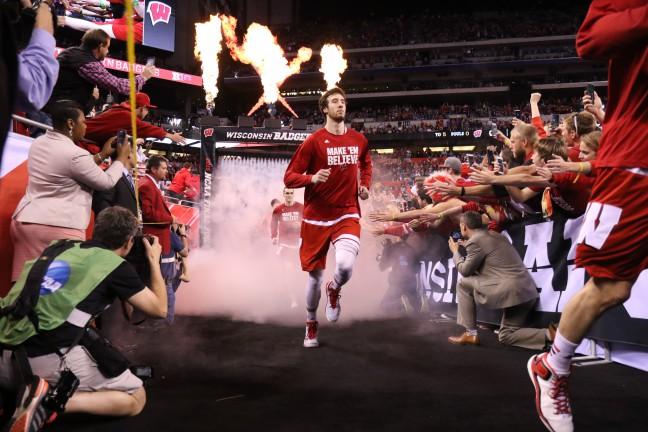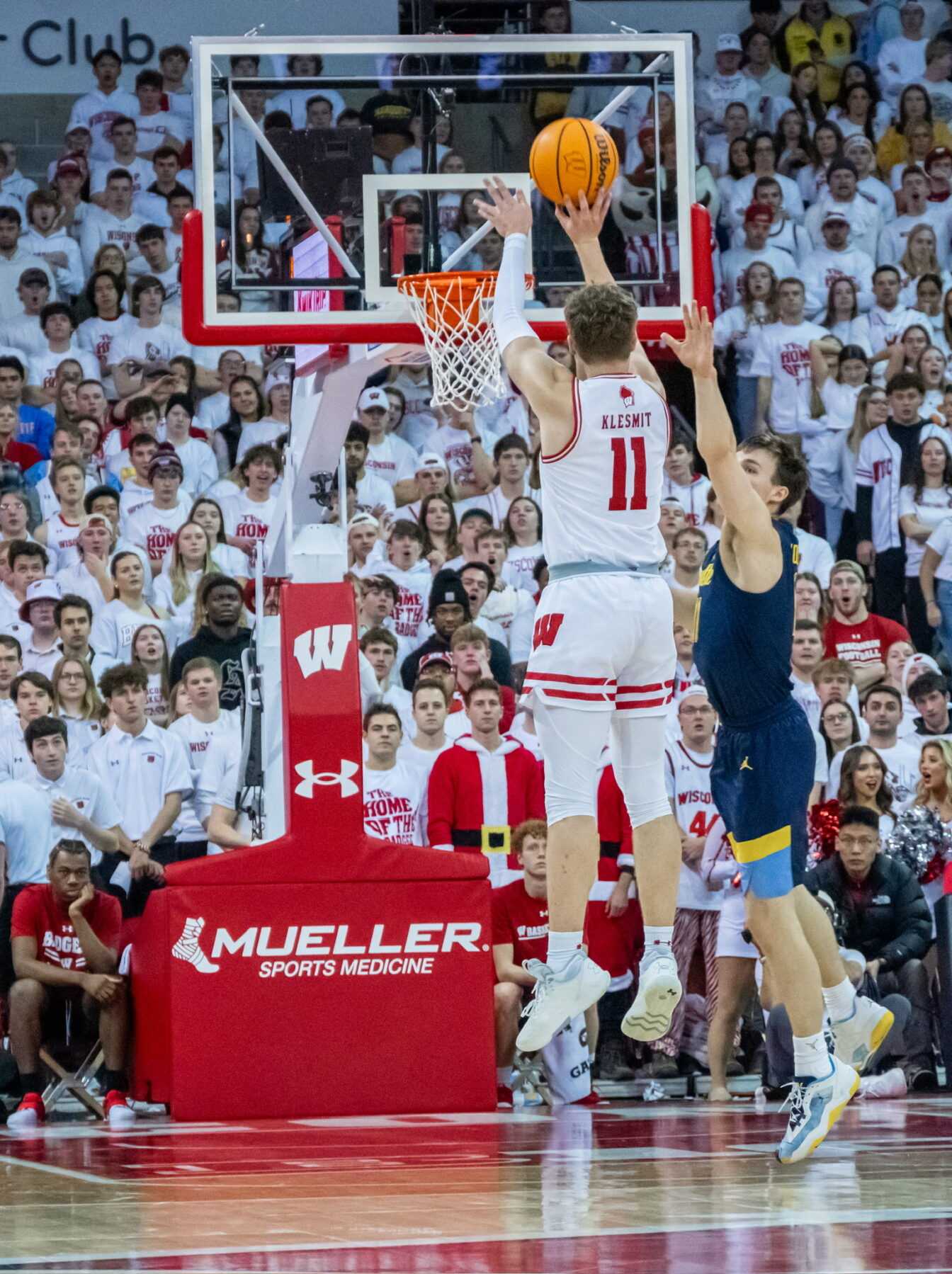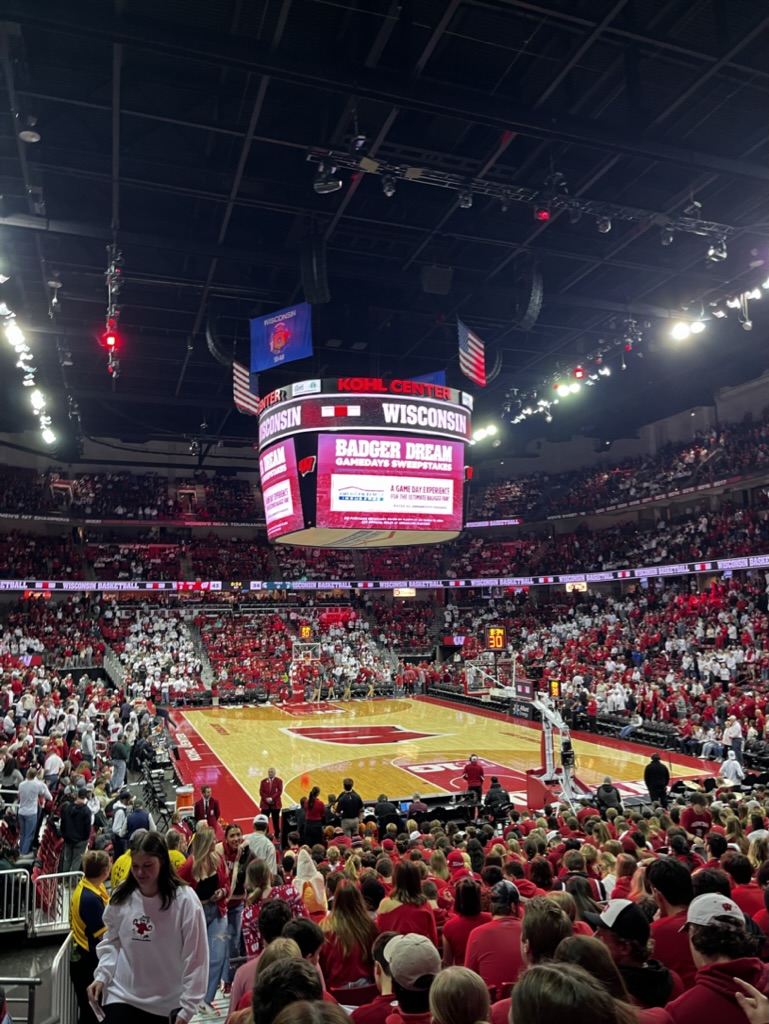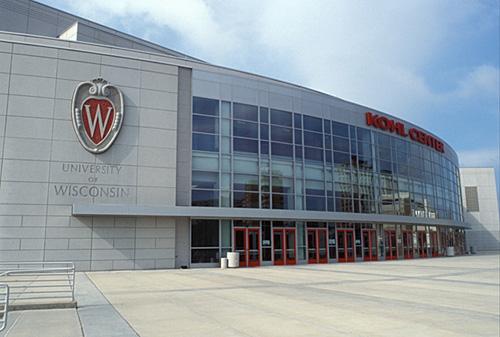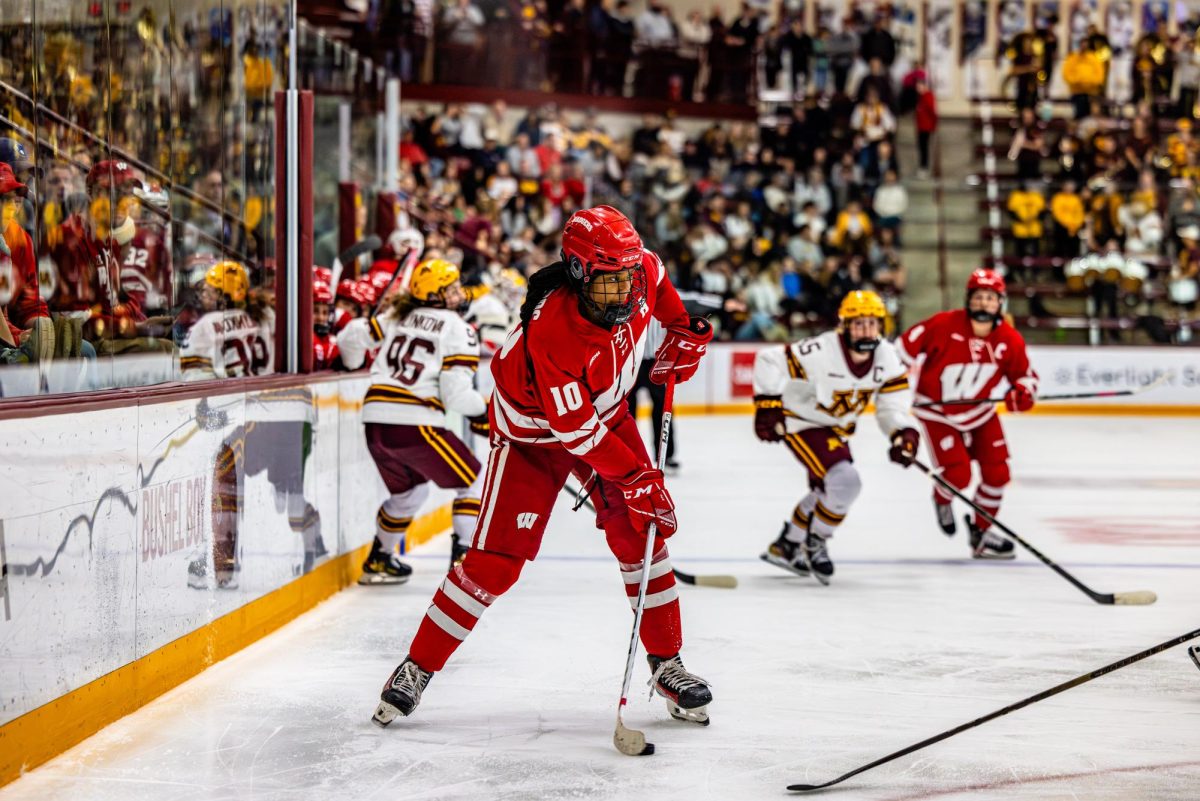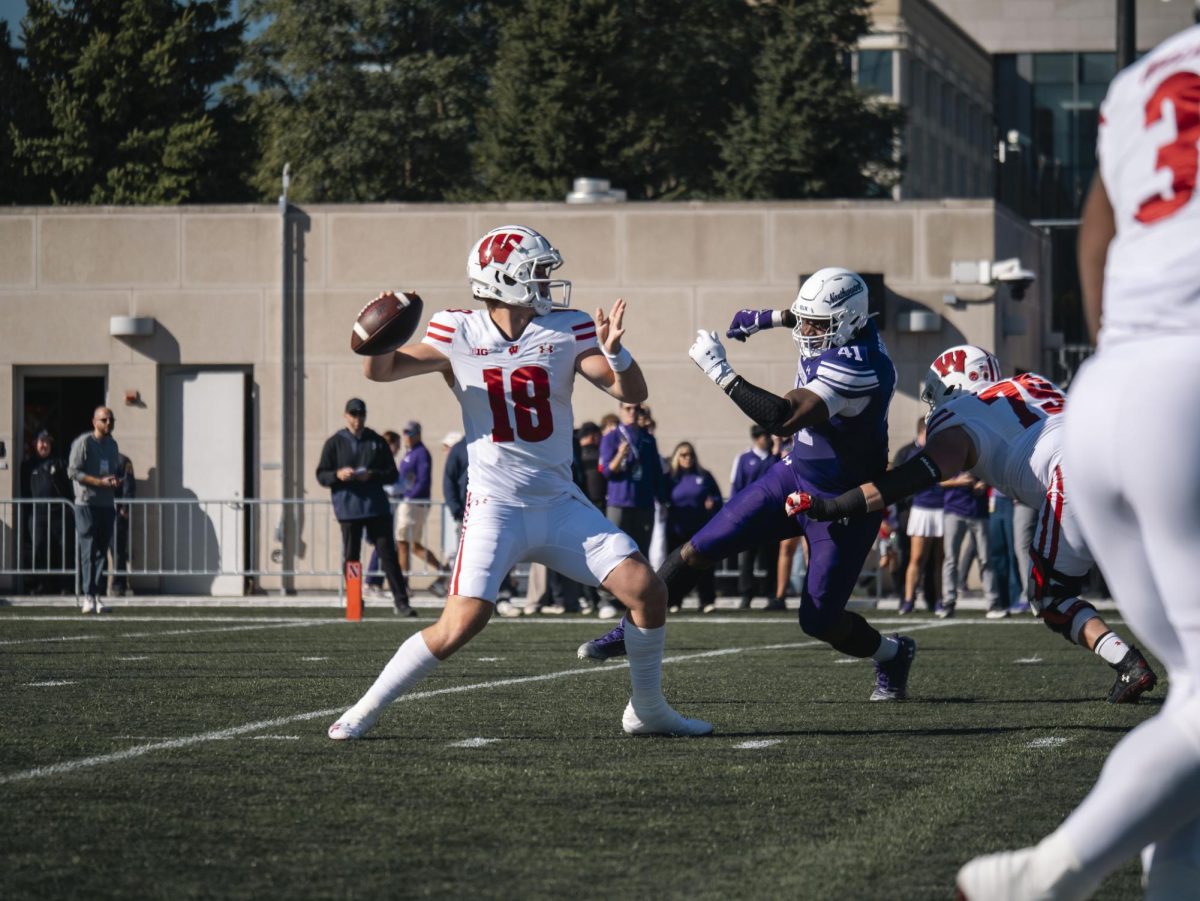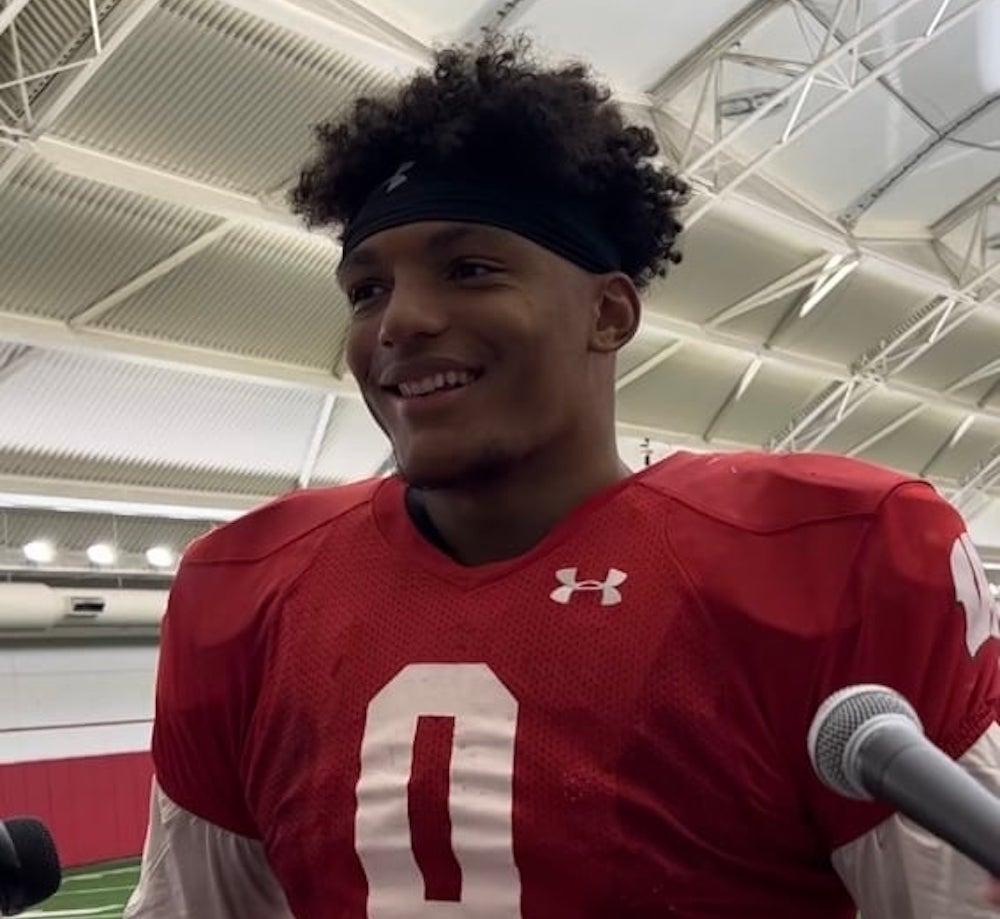March Madness is an emotional rollercoaster for your average college sports fan. Before the battle, it is important to recognize that winning a game in March is no easy feat.
Therefore, making a run requires a lot of things to go right. Many fans saw this season’s Wisconsin Badgers as prime to make a push in the National Invitation Tournament. Going from underdogs to Big Ten regular champs in a matter of months made headlines. This raised fan optimism to levels that outpaced the development of our young squad.
What followed was back-to-back heartbreakers, losing the first game of the Big Ten Tournament to Michigan State then a second-round exit via 11th seed Iowa State. We as fans need to recognize something here — the teams that make the tournament all have talent, but the difference between winning and losing is whether your squad has the experience and chemistry to handle the pressure.
The scoring dominance of Big Ten Player of the Year Johnny Davis and the Badgers’ unsustainable 15-2 record in toss-up games gave way to pressure to keep exceeding expectations in the postseason. Iso-heavy offense and a win-now attitude stray from the Wisconsin brand of basketball that has given us success over the last 25 years.
Fans would benefit from trusting the process. The development of four-year-guys like Steven Crowl, Chucky Hepburn and Tyler Wahl gives us a real chance at reaching the Final Four in the near future. Win-now is for one-and-done hubs like Duke and Kentucky.
Historically, Wisconsin basketball teams have made runs with depth, discipline and defense, a feat done best with lineups led by upperclassmen who know their role and trust the flow of the offense. To understand what it takes to win let’s look back to great teams that set the standard.
Men’s Basketball: UW falls in disappointing fashion to end thrilling 2022 season
Numbers for Context
This article will reference advanced data I’ve created to cross analyze player and lineup combinations from each tournament run. The numbers held to side-step nostalgia in favor of accurate interpretations of the big games that define badger history. Let’s familiarize ourselves with some terms:
- Points Created: a player’s points scored and assisted. Raw totals are adjusted to prevent double-counting of assisted makes
- Offensive Usage % (LOAD): a player’s PC as a percentage of their team’s total points
- Offensive Value Added (OV): a player’s PC above/below the league average player (teammates & competitor) taking the same volume of shots/assist attempts/turnovers
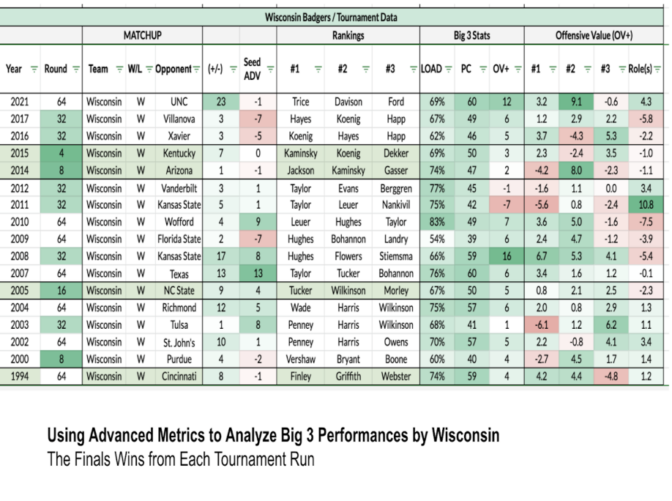
#5: Bootcamp Victory (1942 / Champions)
The Badger’s first and only National Championship came back in 1942 — before WWII and when 95% of current tenured professors were born.
In an eight-team format, the Badgers beat Washington State by scoring a pedestrian 39 points. This era of hoops bore no resemblance to the modern game without a three-point line, shot clock or any semblance of a crossover.
WWII and the incumbent draft put the program on pause. What followed was a near 50-year exodus from March Madness, a spell that would be broken decades later in the 1990s.
#4: Put Madison on the Map (1994 / Elite Eight)
Breakout performances from Wisconsin’s first NBA draft prospect Michael Finley and backcourt partner Tracy Webster pushed the Badgers to their first tournament berth since 1947. Paired with a complimentary rolling big in Rashard Griffith this team was an offensive dynamo that stands out among the most defensive-oriented teams of the 21st century.
This big 3 combined for 48 points in a nail-biting first-round victory over Cincinnati then one-upped themselves with 78 points in a heartbreaking loss to Missouri. Opposing guard Melvin Booker created 40 points on +9.0 offensive value-added which stand as tournament records for single-game performances against a Badger defense. What proved catastrophic was Wisconsin’s bench — 5/19 shooting, nine turnovers and three assists on -15.9 offensive value lost — a record low across 20+ years of tournament data.
1994 symbolized a turning point for Wisconsin basketball — it helped put Madison on the map and gave way to a transformation. Recognizing talents like Finley and Webster are a rare occurrence in the Wisconsin recruitment process, the Badger’s made a shift into a defensive brand of basketball over the coming years that relied on teachable qualities rather than innate ability.
#3: New Heights: (2005 / Final Four)
The 2005 Final Four run was led by Alando Tucker and Michael Wilkinson, a duo of dominant wing players who brought experience and excitement to Wisconsin basketball. Coach Bo Ryan ran a lineup composed of switchable speedy forwards that resemble some of the small-ball lineups we see today. This unprecedented style which relied on lockdown perimeter defense and isolation scoring gave way to a 25-9 record and No. 6 division rank heading into March.
After a first-round battle against Northern Iowa, the Badgers clamped down on defense:
Round of 32 vs. Bucknell backcourt duo→ 5/22 shooting, 4 turnovers, 7 assists = (-13.4 OV)
Sweet 16 vs. Arizona wing duo → 6/26 shooting, 8 turnovers, 8 assists = (-8.3 OV)
The Badger’s run lasted until the Final Four where they faced the University of North Carolina at Chapel Hill’s star-studded roster which featured four future lottery picks. The Tar Heels guards Raymond McCants and Rashad McCants along with big man Sean May combined for 67 points and 13 assists while second overall pick Marvin Williams wreaked havoc defensively.
This team would go down as one of the top college teams of all time. Wisconsin’s ability to match up with them is an achievement within itself.
Football: Wisconsin utilizes transfer portal to replace key contributors from 2021
#2: Defensive Cinderellas (2000 / Final Four)
In 2000 the No.8 seeded Badgers surprised the world in a cinderella run to the final four shocking No. 1 seed Arizona, No. 4 LSU and No. 6 Purdue, sending home three future NBA lottery picks in the process — Gilbert Arenas, Richard Jefferson and Stromile Swift. Coach Dick Bennet led a defensive-minded team run by sharpshooting guard Jon Bryant, paint protecting forward Mark Vershaw and a slashing point guard by the name of Roy Boone.
The box score often fails to show the impact defense has on the end result, but the brutally cold offensive numbers put up by Wisconsin’s opponents make a trend clear. Using my Offensive Value formula, we see how perimeter defense was the key to the Badgers’ four wins and a nine-point average margin of victory across their four wins:
Round of 64 vs. Fresno star guard → 5/19 shooting, 1 turnovers, 3 assists = (-7.0 OV)
Round of 32 vs. Arizona frontcourt trio → 6/21 shooting, 12 turnovers, 4 assists = (-12.1 OV)
Sweet 16 vs. LSU backcourt duo → 3/14 shooting, 9 turnovers, 2 assists = (-8.9 OV)
Elite 8 vs. Purdue backcourt duo → 5/21 shooting, 5 turnovers, 3 assists = (-8.4 OV)
This run came to an end in the Final Four against No. 1 seed Michigan State. But the run was marked a win for the program as it brought Wisconsin to a stage not reached since 1941, giving way to a new era of Wisconsin hoops — one grounded in fundamentals, commitment and most of all defense.
#1 Back to Back: (2014 / Final Four → 2015 / Championship)
The parallels between the 2014 and 2015 Tournament runs are best explained when taken together. In both years, the Badger rosters ranked second to none in terms of experience, talent and chemistry.
The defensive coaching of Bo Ryan paired with the free-flowing offense run through Associated Press Player of the Year Frank Kaminsky made the Badgers a force to be reckoned with. In back-to-back years, the Badgers defeated Oregon and Arizona to move onto the Final Four against the star-studded Kentucky Wild Cats.
In 2014 the Andrew Harrison struggle was offset by Julius Randle and Duke’s deep bench culminating in a heartbreaking one-possession loss for the Badgers. Next time around Kaminsky had Sam Dekker who outplayed future NBA studs Aaron Gordon, T.J. McConell and Karl-Anthony Towns to propel Wisconsin to the championship game versus Duke.
During the 10 previous matches, the Badgers held opposing trios to sub-par offensive splits, ranging from -10 to +2 offensive value-added. This came to a heartbreaking end against the Duke trio Grayson Allen, Tyus Jones and Justise Winslow.
These one-and-done NBA players leveraged their budding star power to foul and win the game from the charity stripe. Nineteen free throw attempts and the double bonus later and Wisconsin had given up a 10-point lead uncharacteristic of their traditionally stout defense.
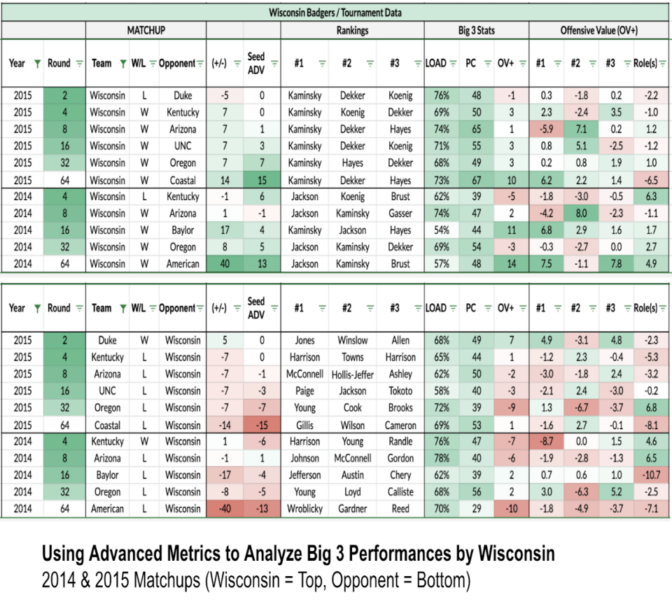 The core guys Kaminsky, Dekker, Ben Brust, Josh Gasser, Nigel Hayes and Bronson Koenig played for each other and nearly won it all against NBA-level talent. Making back-to-back Final Fours established Wisconsin as a basketball school forever and we all owe what happens next to these guys.
The core guys Kaminsky, Dekker, Ben Brust, Josh Gasser, Nigel Hayes and Bronson Koenig played for each other and nearly won it all against NBA-level talent. Making back-to-back Final Fours established Wisconsin as a basketball school forever and we all owe what happens next to these guys.
Looking Ahead
Over the last 20 years, Wisconsin has built a reputation as a basketball school reaching the Sweet 16 ten times in the last 25 years ranking second among Big Ten teams and 13th nationally in appearance. The idea of the UW as a “basketball school” is a modern phenomenon pioneered by Finley in 1994 and the defensive underdogs in 2000. The torch has been carried by the likes of Tucker ‘05, Kaminsky ‘15 and now Davis ‘22.


